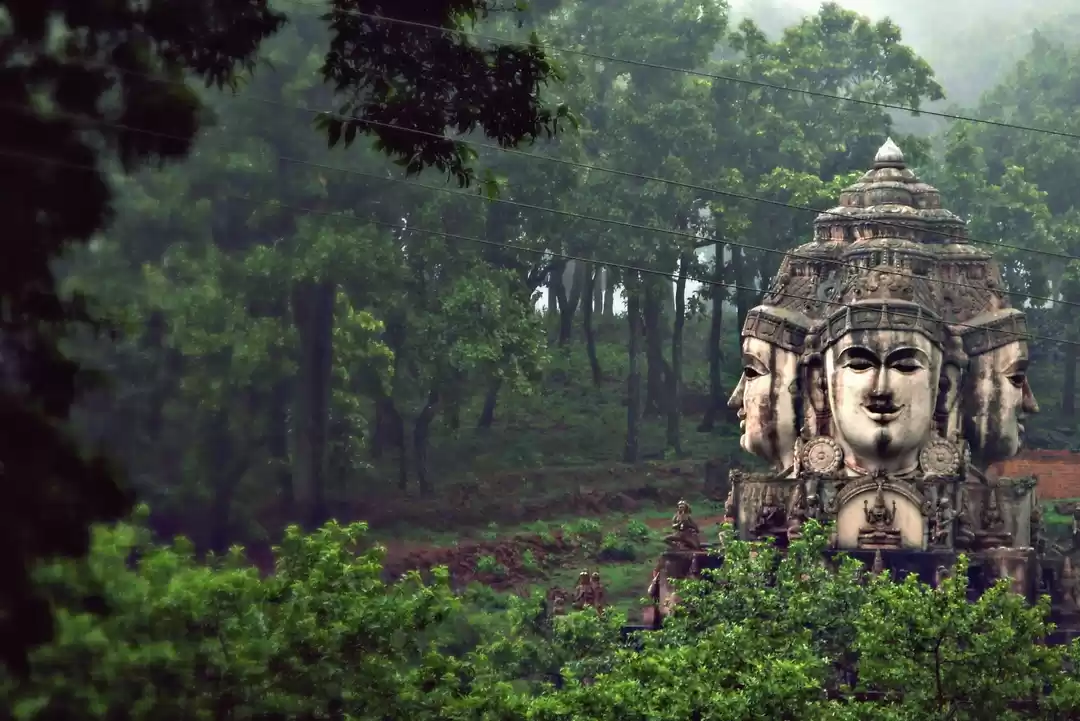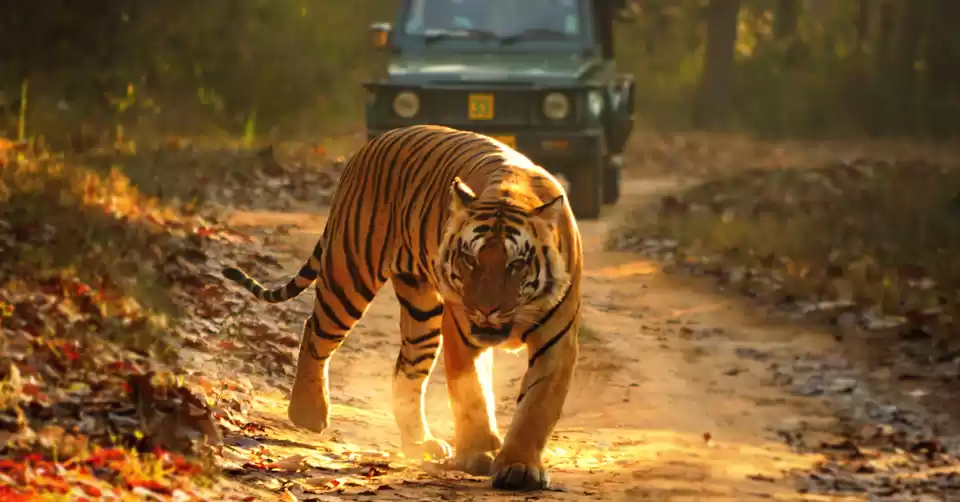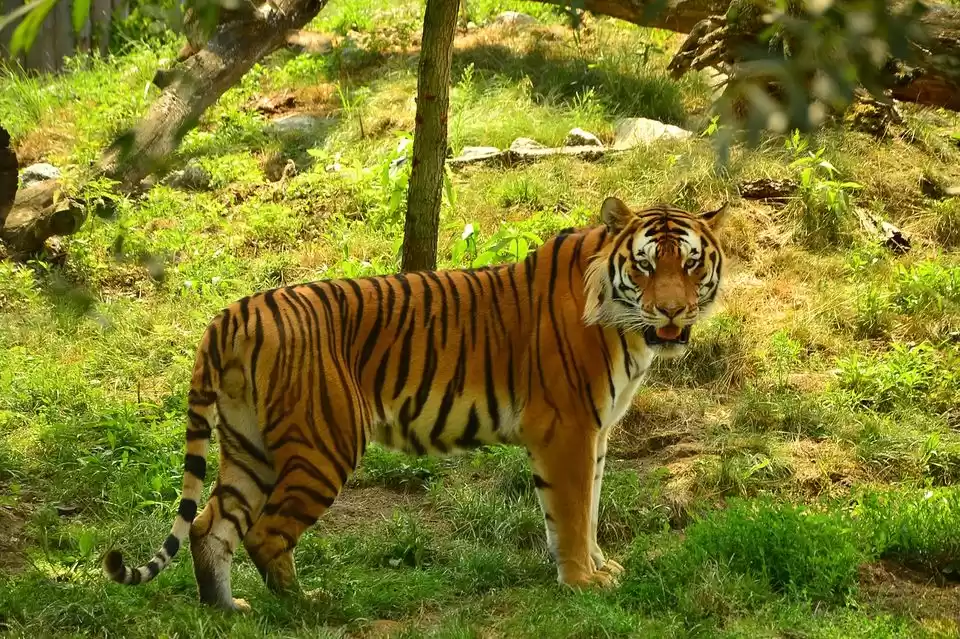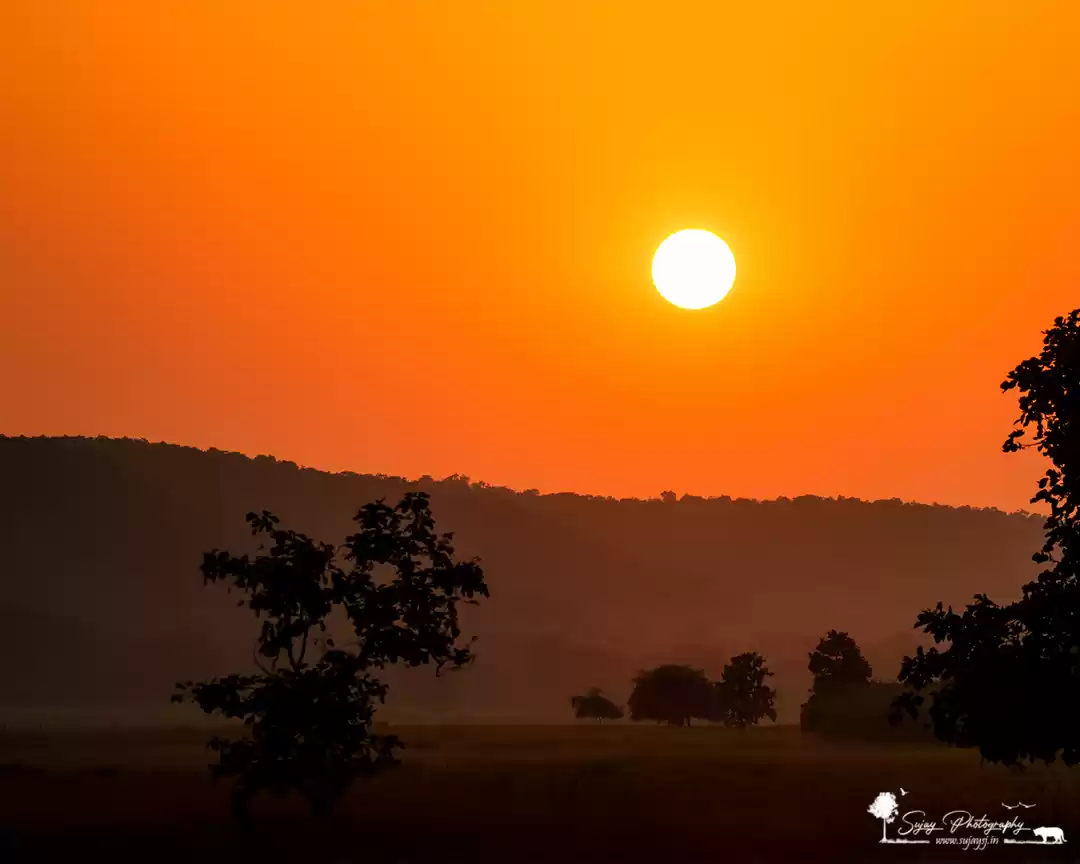
India’s tiger population has increased to 3,682 up from 2,967 in 2018, according to an estimate released in July 2023. This invariably consolidates India's position of having the highest number of Tigers in the wild across the globe. India’s tigers are largely concentrated in 53 dedicated tiger reserves spread across 75,796 square km, spanning about 2.3% of India’s total land area. Tigers in India constitute more than 75% of the global population of tigers.
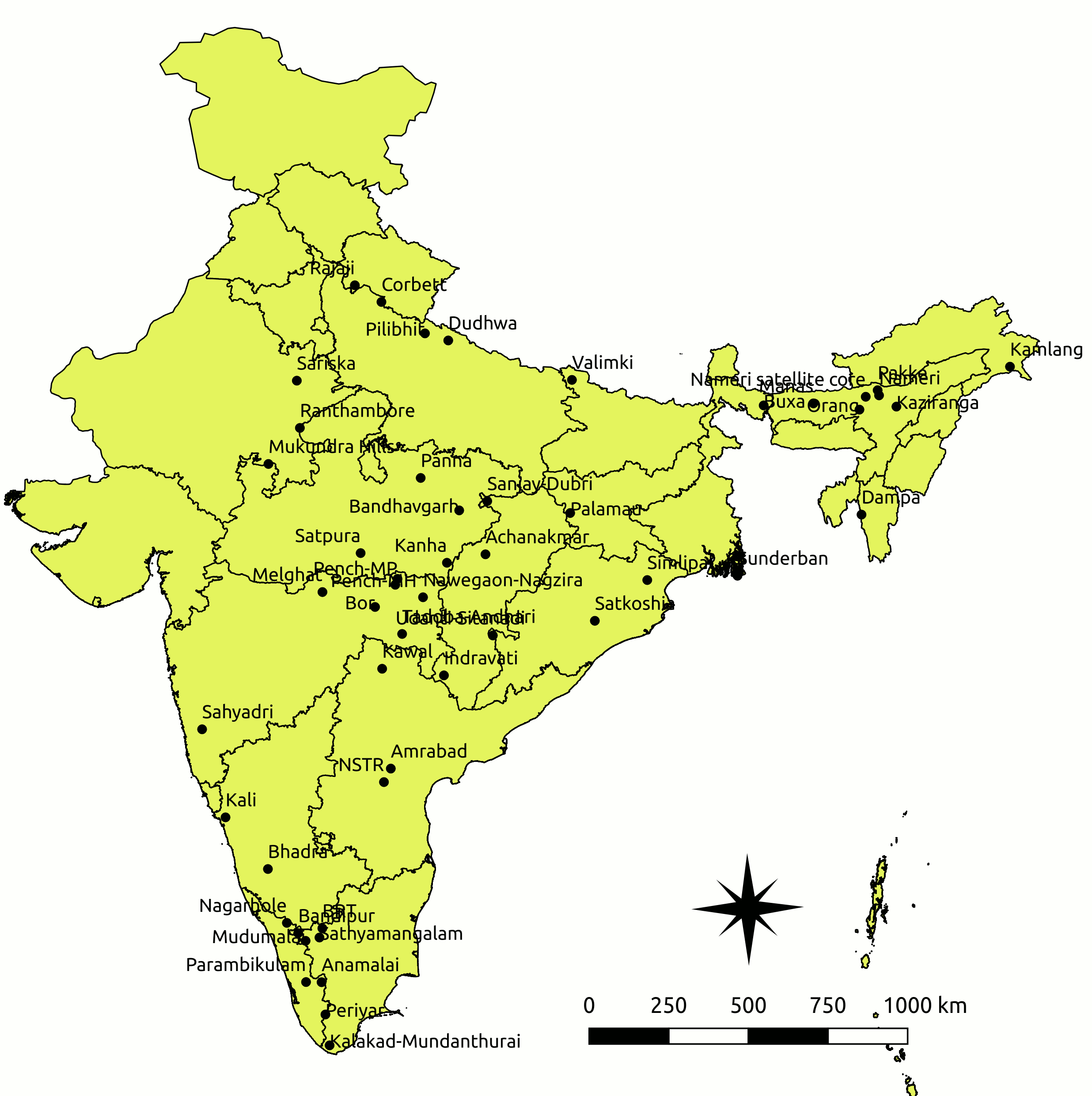
The tiger reserves of India were set up in 1973 and are governed under Project Tiger, which is administered by the National Tiger Conservation Authority, Government of India. In August 2023, the Dholpur-Karauli Tiger Reserve in Rajasthan was declared as the latest and the 54th tiger reserve of India in 2022. It thus also became the fifth tiger reserve in the state of Rajasthan following Mukundra Hills, Ramgarh Vishdhari, Ranthambore, and Sariska.


The tiger landscapes
India has five major tiger-occupied landscape complexes which have their own unique geographical features and populations of tigers
- Shivalik Hills and Gangetic Plains: The landscape consists of three parallel geological zones - the Shivaliks, the Bhabar tract and the Terai plains ranging from Uttarakhand, Uttar Pradesh to Bihar.
- Shivalik Hills and Gangetic Plains: The landscape consists of three parallel geological zones - the Shivaliks, the Bhabar tract and the Terai plains ranging from Uttarakhand, Uttar Pradesh to Bihar.
- Central India Highlands and Eastern Ghats: Landscape includes all the area from the semi-arid zone of Rajasthan, the Central Indian plateau of Madhya Pradesh, Chhattisgarh, Jharkhand, Maharashtra to parts of the Eastern Ghats covering Andhra Pradesh and Telangana and Odisha
- The Western Ghats: Beginning from the River Tapi in the North, running parallel to the Arabian Sea coast and stretching over 1600 km to end at Kanyakumari in the South, the Western Ghats landscape ranges from Goa, Karnataka and Kerala to Tamil Nadu.
- North Eastern Hills and Brahmaputra Plains: North Bengal Dooars, Brahmaputra Flood Plains and North Eastern Hill ranges together constitute the North Eastern Hills and Brahmaputra Plains Landscape which ranges from across parts of Northern West Bengal, Assam, Arunachal Pradesh, Mizoram and Nagaland.
- Sundarbans: The Sundarbans landscape consists of mangrove forests in the southern part of West Bengal and extends into Bangladesh. This important wetland is a global priority Tiger Conservation Landscape Unit covering an area of more than 10,000 sq km which was declared a World Heritage Site by UNESCO in 1987. This region is also known for the prevalence of high numbers of Man-Eater tigers.


Tiger tracking
Presence of the tiger can be confirmed by observing the following seven signs
- Pugmark Trails
- Scats / Faeces (Old: dry with hair and bones visible, Fresh: dry but intact with shiny surface, Very Fresh: soft, moist, and smelly)
- Scrapes
- Scent marks (spray, rolling)
- Rake marks on trunks
- Actual sighting
- Roaring

Project Tiger
Project Tiger is a wildlife conservation movement initiated in India in 1973 to protect the Bengal tigers of India. Project Tiger is administered by the National Tiger Conservation Authority. The overall administration of the project is monitored by a steering committee, which is headed by a director. A field director is appointed for each reserve, who is assisted by a group of field and technical personnel.
Project Tiger's main aims are to:
- Reduce factors that lead to the depletion of tiger habitats and to mitigate them by suitable management. The damages done to the habitat shall be rectified to facilitate the recovery of the ecosystem to the maximum possible extent.
- Ensure a viable tiger population for economic, scientific, cultural, aesthetic and ecological values.

Conservation
As an apex predator, tigers are indicators of a healthy ecosystem. Conservation of tigers ensures the sustenance of healthy populations of herbivores and other carnivores. In recent times, India has signed bilateral agreements with China, Cambodia, Bangladesh, Nepal, Bhutan, Myanmar and Russia to address issues of mutual concern for Tiger conservation. Tiger conservation follows the principle of "core-buffer-corridor" and a tiger reserve is mandated to have a "Core Area" and a "Buffer Area". The core area is highly protected while buffer zones are in the periphery of the core area. The buffer area is meant for multiple uses with community participation for supporting tiger conservation. Corridors are the areas between the larger reserved forests which serve as the connecting geographical section of habitat that enables wildlife to move freely through the landscape. However, many of these corridors are not designated as protected areas and are prone to degradation due to unsustainable human activities and developmental projects undertaken in these eco-sensitive areas. These corridors would ensure genetic exchange through dispersal. The corridors would also serve to guard against extinction risks caused by environmental and man-made factors.
Best places to spot the tigers in the wild

In India, Madhya Pradesh has the maximum number (785) of tigers in the country, followed by Karnataka (563), Uttarakhand (560), and Maharashtra (444), according to the data. If we look at the individual tiger reserves - Corbett Tiger Reserve has the highest density of tigers (260), followed by Bandipur (150), Nagarhole (141), Bandhavgarh (135), Dudhwa (135), Mudumalai(114), Kanha (105), Kaziranga (104), Sundarbans (100), Tadoba (97), Sathyamangalam (85), and Pench-MP (77). While some of the other tiger reserves also boast good numbers, the ones mentioned above are indeed the best places where you can sight them relatively easily while on a jungle safari. In all, Fourteen tiger reserves boast populations ranging from 50 to 100 tigers.
Did you know?
The epic Mahabharata also has a shloka talking about the tigers -
निर्वनो वध्यते व्याघ्रो निर्व्याघ्रं छिद्यते वनम् । तस्माद्व्याघ्रो वनं रक्षेद्वनं व्याघ्रं च पालयेत् ॥
which can be translated as -
which can be translated as - Do not cut down that forest with its tigers! Let not the tigers be driven from that forest! There can be no forest without tigers, and no tigers without a forest. The forest shelters the tigers and tigers guard the forest.
This is such an apt saying and true to the day - the tiger is indeed considered top of the food chain and apex predator of the Indian forests for a reason - a healthy population of tigers always signifies a healthy forest and an ecosystem.


















